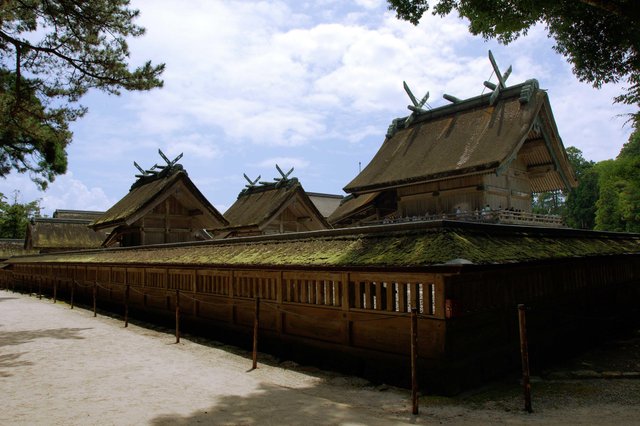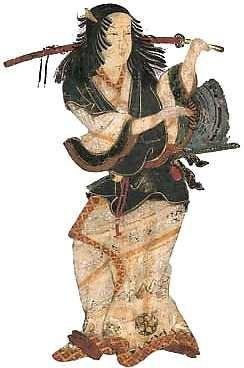Japanese Kabuki Theater and its founder Izumo no Okuni
Appeared in Japan in the distant VIII-IX century. Sarugaku theater performance is actively practiced in all areas of life.
Dancing, singing, juggling and theatrical putting everything from the children of peasants and ending the nobility of women, however, with the advent of professional theater SARUGAKU But much changed. In particular, the actors, according to the European model, can only be male, perform, including the role of women.
In particular, the actors, according to the European model, can only be male, perform, including the role of women.
It is clear that women become offended, and unlike the aristocratic and official theater, but at the turn of the XVI-XVII century. in Japan, kabuki theater began to take shape. Theater of the people, as they say.
The founder, you guessed it, was a woman - the daughter of a blacksmith named Izumo no Okuni. talented dancers and singers, he collected on the appearance of those large crowds of people, but did not see that information about it has reached us very little - unknown even the exact year of his birth (researchers fluctuate between 1571 and 1572 years), not to mention the date of death - since 1610 Okuni is no longer mentioned in the written source.
But his birthplace is known! This is the small town of Izumo, where one of the oldest Shinto shrines in Japan is Izumo-taisha. Incidentally Buddhist temples in these lands are not even within a dozen kilometers, which is why Buddhist monks should hold their ceremonies at Shinto shrines. Then Perch will tell you what it was thanks to the stubborn in his native land, he and the monks forgot how much Buddhist dance ritual and song, then paved the way to the stars.
As a teenager he joined a group of dancers running around the country and raising money for the sake of the mother temple of Izumo.

Shinto Shrine from Izumo-tais
By the way, Izumo-taisia still does not know the end of the visitors, because it is believed that the best there is to ask the gods for love and happiness. Therefore, in many ways, the group of temple dancers with open arms meet in any city in Japan,
bestowing Okuni and his "colleagues" with gifts. And again, one of the hallmarks of the Land of the Rising Sun and Japanese society: the means to nurture and develop Shinto shrines collected by the girls, performing Buddhist songs and dances! Two perfect religious teachings coexist in the same region and coexist harmoniously, and it is called all (and now called) Shinto-Buddhist syncretism.

Unfortunately, there are no details about the life of the nomadic group of chronicles that have been preserved, but thanks to contemporary memoirs, some general conclusions can be drawn. So little by little Okuni's incredible dancer began to accompany his performance not with ritual temple singing, but enough for his secular self and understandable by songs that live on topical and popular themes.
Of course, Okuni finally broke down the leaders of the entourage, and not only that: strong characters coupled with the talent of doing their job. An ingenious improvisation? Perched! Is it quick to change the costumes during the show? He's the same! To sing very clean and loud, so donation to Izumo-tai temple will last a year ahead? Immediately contact Perch! Etc ...
Nyoe kahiye lon bacut
Always wanted to attend a Kabuki. I've been looking for masks on Kabuki Masks and I think I'll be getting one. Great article though